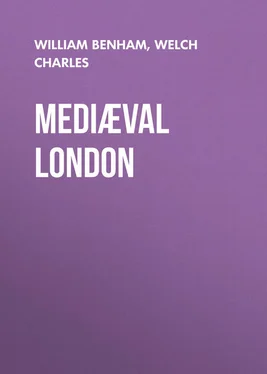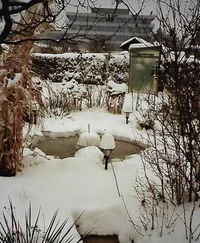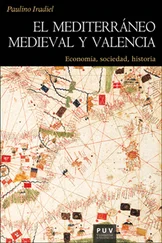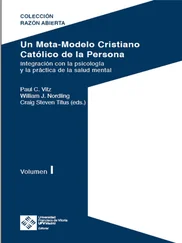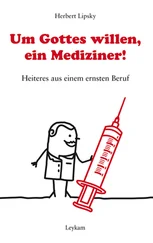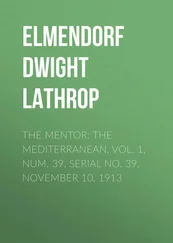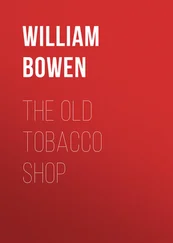William Benham - Mediæval London
Здесь есть возможность читать онлайн «William Benham - Mediæval London» — ознакомительный отрывок электронной книги совершенно бесплатно, а после прочтения отрывка купить полную версию. В некоторых случаях можно слушать аудио, скачать через торрент в формате fb2 и присутствует краткое содержание. Жанр: foreign_antique, foreign_prose, Историческая проза, на английском языке. Описание произведения, (предисловие) а так же отзывы посетителей доступны на портале библиотеки ЛибКат.
- Название:Mediæval London
- Автор:
- Жанр:
- Год:неизвестен
- ISBN:нет данных
- Рейтинг книги:5 / 5. Голосов: 1
-
Избранное:Добавить в избранное
- Отзывы:
-
Ваша оценка:
- 100
- 1
- 2
- 3
- 4
- 5
Mediæval London: краткое содержание, описание и аннотация
Предлагаем к чтению аннотацию, описание, краткое содержание или предисловие (зависит от того, что написал сам автор книги «Mediæval London»). Если вы не нашли необходимую информацию о книге — напишите в комментариях, мы постараемся отыскать её.
Mediæval London — читать онлайн ознакомительный отрывок
Ниже представлен текст книги, разбитый по страницам. Система сохранения места последней прочитанной страницы, позволяет с удобством читать онлайн бесплатно книгу «Mediæval London», без необходимости каждый раз заново искать на чём Вы остановились. Поставьте закладку, и сможете в любой момент перейти на страницу, на которой закончили чтение.
Интервал:
Закладка:
As the Thames on the south side of the city did noble service as the principal highway for its commerce and its corn supply, so the fields on the north furnished large pasture-land for its cattle. Across these fields a road led away to the village of Islington. In the Moor Fields were the Artillery Butts, whither young London resorted to be trained in the use of the bow. Readers may remember the description of them in the opening portion of Lord Lytton’s novel, The Last of the Barons . Within the walls adjacent to this part the manufacturers of bows and arrows were settled. Very strange and curious have been the various associations of the name “Grub Street.” Grobes were feathers for arrows, and originally Grub Street was that in which arrows were finished. That manufacture died out, and the street, being in a Puritan neighbourhood, in the days of Elizabeth became the publishing place for violent attacks upon the bishops. “Martin Marprelate,” the well-known series of that class of publication, was issued from this street. Then, by a natural transition, scurrilous lampoons in general, and not merely theological, came to be called “Grub Street tracts,” because the phrase had become current; and the name stuck, and was applied to literary rubbish of any kind, Pope having endorsed the title in his satire. The name has, unfortunately, disappeared from the street within the last decade. The authorities, because the name had become obnoxious to fastidious ears, have changed it to Milton Street, the poet having been borne down it from Bunhill Fields, where he died, to be buried in St. Giles’s Church.
Partly on the site of Liverpool Street Station, and partly across the road as far as the Underground Railway, stood, in mediæval times, the “Hospital of St. Mary of Bethlehem.” From early times, certainly in 1402, this religious foundation was devoted to the care of the insane, and at the Dissolution it became one of the Royal Hospitals, with lunatics exclusively for its inmates. It was the Great Fire of 1666 which permanently changed all this neighbourhood. Up to that time the greater part had been fields, but now the poor burned-out citizens came and (literally) pitched their tents here, and stowed within them the goods which they had been able to save. Here they carried on their business, and gradually substituted rough houses for these tents; and thus, by the time the City was rebuilt, a new suburb had arisen, and a well-inhabited suburb from that time it remained. Bethlehem Hospital was removed to London Wall in 1675-6, as the monastic buildings had decayed, and the increasing number of patients required larger room. It found its present home in St. George’s Fields in 1812-15. And here we may note that “Finsbury Fields,” i. e. , Finsbury Circus and the land round it, formed the favourite summer lounge of the London citizens up to the beginning of the eighteenth century. It was laid out in formal style, with paths and bordering trees. Merchants and tradesmen came hither at eventide, as the fashionable world of to-day goes to Hyde Park. Poets and pamphleteers met publishers, and playwrights made appointments with managers. A large body of spectators frequently gathered here to see a thief whipped at the cart’s tail.
And now we will simply name the most prominent events in the history of the city during our period.
In Pre-Norman times, after Alfred had restored the lost prosperity of London, his grandson Athelstan (925-940) established a royal palace and a royal mint, and gave an impulse to the commerce of the city by promising patents of gentility to every merchant who should make three voyages to the Mediterranean in his own ship. His “redeless” grandson Ethelred abandoned London to the Danes, and Cnut levied an impost of 11,000 l. upon it, a proof of the great wealth which it had now acquired. It was a seventh part of that of the whole kingdom.
Norman Times. – As already mentioned, London is not in Domesday book. It is probable that there was a separate survey, the records of which are now lost. Domesday incidentally mentions ten acres of land near Bishopsgate, Norton Folgate, as belonging to the Dean and Chapter of St. Paul’s, and a vineyard in Holborn, the property of the Crown.
The founding of the many religious houses during this period we have already mentioned. The building of the first stone bridge by Peter of Colechurch, which also belongs to this period, finds its place in another page.
We note the orders of Henry Fitzailwin, the first Mayor, for the prevention of fires. All houses were to be of brick or stone, with party walls of the same, and to be covered with slates or tiles. The building of houses round the Walbrook, Oldbourne, and Langbourn had diminished the supply of water, so they sought a fresh supply from Tyburn, and supplied a conduit in Cheapside with water from thence, which they brought in leaden pipes (A.D. 1255). The chronicles of Evesham say that in 1258, 20,000 persons died of hunger through a scarcity of corn, and ghastly stories are told of another famine in 1270. But on the whole London increased and prospered under Norman rule. In 1264 there was a massacre of the Jews on some trivial pretext. They were expelled the kingdom in 1291.
Plantagenet Times. – The division of the city into wards dates from the beginning of this period or earlier. In 1348 came the terrible Black Death. “In London it was so outrageously cruel that every day at least twenty, sometimes forty or sixty, or more, dead corpses were thrown together into one pit, and the churchyard not sufficing for the dead, they were fain to set apart certain fields for additional places of burial… But especially, between Candlemas and Easter in 1349, there were buried 200 corpses per diem” (Barnes’s Hist. of Edward III. ). It is chronicled that more than 50,000 persons were buried, during this pestilence, within the precincts of the Charterhouse alone. The trial of Wyclif in St. Paul’s was a memorable event, when John of Gaunt stood forth as his champion.
In 1380 came the Wat Tyler rebellion, and the death of the leader from the dagger-stroke of Sir William Walworth. Hence the long-exploded but hard-dying theory of the “dagger” in the City Arms. The charge in question is the sword of St. Paul, London’s patron saint, and it was borne on the City shield before the deed of Walworth. Smithfield, where the event took place, was then “a great plain field, without the gates,” where on every Friday was “a great market for horses, whither earls, barons, knights, and citizens repair, to see and to purchase.” Our quaint illustration depicts King Richard II. going forth on his ill-fated expedition against Ireland.
Lancaster and York. – The first recorded illumination of the City was at the Coronation of Henry IV. Ten years later, the Mayor, Sir Henry Barton, ordered that the streets should be lit with lanterns every night.
Jack Cade’s rebellion in 1450 seemed at first successful, so far as the city was concerned. He took possession of it, and for a while maintained order among his followers. But they broke out into outrages, slew Lord-Treasurer Saye, and other persons of consequence, and the citizens, with the assistance of the Governor of the Tower, rose up and expelled him. Soon afterwards he was killed. As a rule the citizens inclined to the House of York, and in consequence Edward IV, steadily favoured the Londoners. The setting up of Caxton’s printing-press in his reign was a great epoch in the history of the world.
Конец ознакомительного фрагмента.
Текст предоставлен ООО «ЛитРес».
Прочитайте эту книгу целиком, купив полную легальную версию на ЛитРес.
Читать дальшеИнтервал:
Закладка:
Похожие книги на «Mediæval London»
Представляем Вашему вниманию похожие книги на «Mediæval London» списком для выбора. Мы отобрали схожую по названию и смыслу литературу в надежде предоставить читателям больше вариантов отыскать новые, интересные, ещё непрочитанные произведения.
Обсуждение, отзывы о книге «Mediæval London» и просто собственные мнения читателей. Оставьте ваши комментарии, напишите, что Вы думаете о произведении, его смысле или главных героях. Укажите что конкретно понравилось, а что нет, и почему Вы так считаете.
